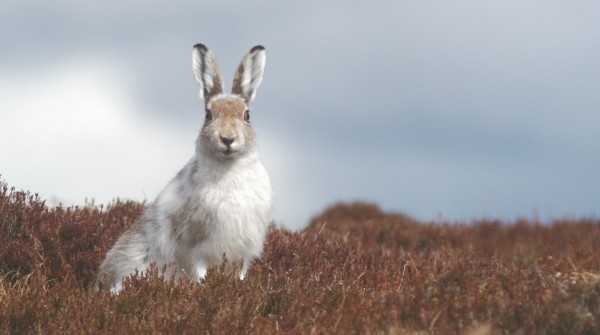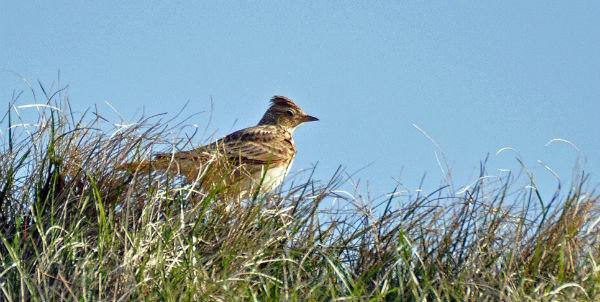
GAMEKEEPERS throughout the Scottish uplands are being asked to take the lead to ensure that mountain hare (Lepus timidus) numbers are sustainably managed for the future by implementing a new counting methodology that provides better insight into their abundance.
The new approach has been rolled out following the 2018 publication of a three-year research project that compared different methods of counting mountain hares. The work, undertaken by the James Hutton Institute and the Game & Wildlife Conservation Trust (GWCT), was commissioned by Scottish Natural Heritage (SNH).
The report identified two methods that provide reliable information and included guidance on how these techniques can be undertaken. The first approach involves night-time surveys, using either lamps or thermal imaging equipment and the second assesses mountain hare dung accumulation. The night-time surveys using lamps are the most simple and cost-effective method, a key aim and recommendation of the research. Daylight survey techniques were discounted as unlikely to provide a reliable or repeatable population index.
The lamping approach requires a ‘walk and count’ along 2km transects using a hand-held spotlight. Mountain hares are usually most active just after sunset, and surveys typically start just after this. Current guidelines also recommend that night surveys are best conducted in the early winter, from October to December, ideally in clear, dry weather avoiding windy conditions, rain, snow and fog. Surveys undertaken at this time provide an index of post-breeding abundance.
Nearly 70 gamekeepers and land managers across 47 estates have now attended formal training workshops led by GWCT. The courses cover the importance of counting for management planning and conservation, lamp methodology practice, equipment, use of count cards and selection of survey sites. Over 60 sites and 240 transects have already been mapped for repeat surveys. Due to continuing demand, the programme of training workshops will run again in 2019 and be extended to nature reserves and other types of landholding in order to establish a fuller picture of populations on the ground.
Night-time lamping surveys carried out using the new methodology in late 2018 are revealing further insights into species abundance. In one case, 102 mountain hares were counted on a single walked transect in the central highlands, whilst another study site (comprising four walked transects) yielded a count of over 200 mountain hares. These results, which point to robust mountain hare abundance on managed moorland, were achieved in much the same areas as daylight counts for the report by the Centre of Ecology and Hydrology and RSPB published in the Journal of Applied Ecology in August 2018 that suggested significant declines in hare numbers.
Mountain hares are protected in the closed season (1 March to 31 July) and can only be legally controlled during the open season.
Ross Macleod, head of policy in GWCT Scotland, said: “In providing count guidance training to land managers and gamekeepers across the different Regional Moorland Groups in Scotland, we have been struck by the professionalism all have shown in getting to grips with the new methodology as a key tool in the conservation of mountain hares. We look forward to continuing the process in 2019.”
Developing a counting methodology for mountain hares (Lepus timidus) in Scotland
Help us tell The Untold Story about conservation

The public aren’t being told about the vital work being done in the British countryside by land managers. You don’t hear much about the good work they're doing. Their contribution is criminally overlooked. You can change that today.
- £25 will pay for 10 copies of our vital new publication The Untold Story to be sent to journalists & policymakers
- £70 will help us to get journalists out to see the real work that is being done in our countryside
- £125 supports us in briefing the public through advertising, press and online activity
Donate by Credit or Debit Card >>
Got a PayPal account? Donate faster here:

Notes to editors
The Game & Wildlife Conservation Trust is an independent wildlife conservation charity which carries out scientific research into Britain’s game and wildlife. We advise farmers and landowners on improving wildlife habitats. We employ 22 post-doctoral scientists and 50 other research staff with expertise in areas such as birds, insects, mammals, farming, fish and statistics. We undertake our own research as well as projects funded by contract and grant-aid from Government and private bodies. The Trust is also responsible for a number of Government Biodiversity Action Plan species and is lead partner for grey partridge and joint lead partner for brown hare and black grouse.
For information, contact:
Playfair Walker
Telephone: 0131 445 5570
Email: richard@playfairwalker.com